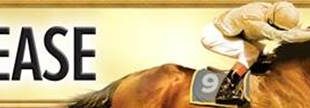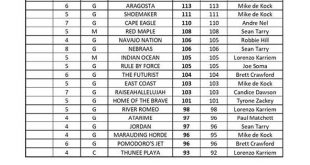If it wasn’t for World War II the Merit Rating system that attracts mixed feeling out here today might never have existed.
Dick Whitford, regarded as the father of modern handicapping, was the chief officer of a British patrol ship during the war and whiled away the long hours of inactivity in his cabin creating a universal handicap of all racehorses in Britain.
He had little inclination towards the sport, but after a chance meeting with the sports editor of the Daily Telegraph, returned to sea armed with copies of annual form books and began to examine the results, plotting charts to link the horses and create evidence that racehorses were “almost exactly figurable”. Each horse acquired a row of ratings based on the best three or four runs out of seven and it became evident that on this basis horses were astonishingly consistent.
It dawned upon him that he would get nowhere without a broad outline of the racing spectrum from the best horse to the worst. He thus set about creating a single composite handicap of all the runners of 1941. Every horse was included with no special sections for two-year-olds, stayers or sprinters.
There were enormous complications and he confessed that he would not have continued had he not “kept making fascinating discoveries – groups of horses that meshed with each other with astonishing precision.” He achieved his goal by Autumn 1942 and to prove its worth translated the individual ratings into race ratings for current racemeetings and sent his predictions to the Daily Express and Raceform. They worked out “exceptionally well”.
In the meantime the legendary Phil Bull, who made a fortune out of betting on horses and helping others do the same, had been doing very well since 1938 with a horseracing time ratings service he provided, which he then followed in 1943 with an equally successful annual book called “Best Horses”.
Bull had a mathematics degree and said that race times were meaningless unless the conformation of the track, the state of the going, wind strength and direction, and the pace at which the race was run was taken into account.
He developed a technique of calculating the real value of the time performance by mathematically assessing all the times recorded at a particular racemeeting after referring to the statistical analysis of previous times recorded at the same track. His time rating service was by mail order and with six winning years in the first seven, he was able to advertise a profit of 23p for every one pound bet.
Whitford had started correspondence with Bull during the war and when it ended they arranged a meeting at a Newmarket racemeeting. It was the first time Bull, who didn’t suffer fools galdly, had met a kindred spirit and he invited Whitford to be his assistant on his Best Horses book.
The pair spent the summer going to the races, visiting stables, studs and sales rings and watching gallops, while Whitford did his handicaps in his spare time.
The book was compiled over the winter with Whitton producing the facts and figures and collecting photographs and Bull doing the writing.
Bull was regarded as one of racing’s finest ever writers, but by this time had all the symptoms of writer’s block. He fell behind in the mammoth task and the deadline for Best Horses was seldom met.
In 1947 an exasperated Whitford devised a shorthand version of Best Horses which included brief comments on all of the horses of that year together with his own form ratings and Bull’s time ratings. Bull immediately saw its market potential and so Timeform was born.
The Timeform Ratings were arrived at by co-ordinating the time ratings of Bull and the form ratings of Whitford and are today regarded as the definitive measure of racing merit.
Whitford left the business in 1949, but by 1962 the company published Timeform every week, Race Ratings for all races and Timeform racecards for all meetings, Flat and National Hunt, as well as producing the very popular annual book Racehorses which began in 1949.
Previously, the task of creating a comprehensive running handicap had been defeated by the fact that horses improve over time.
But Bull simply took the horse’s inherent merit and subtracted the Weight-For-Age allowance to arrive at a real rating, known today in South Africa as a “net rating.”
The Merit Rating system used throughout the world today is indebted to Whitford and Bull.
David Thiselton








